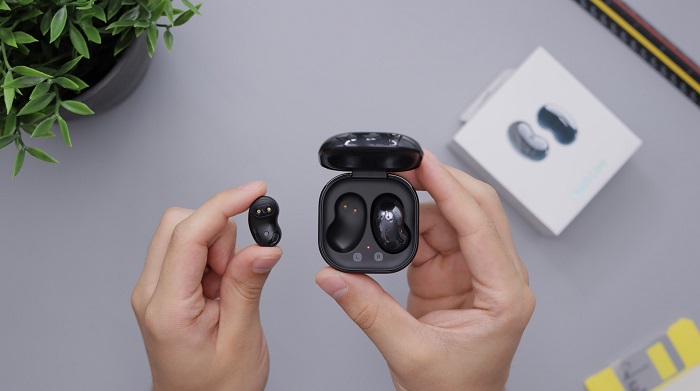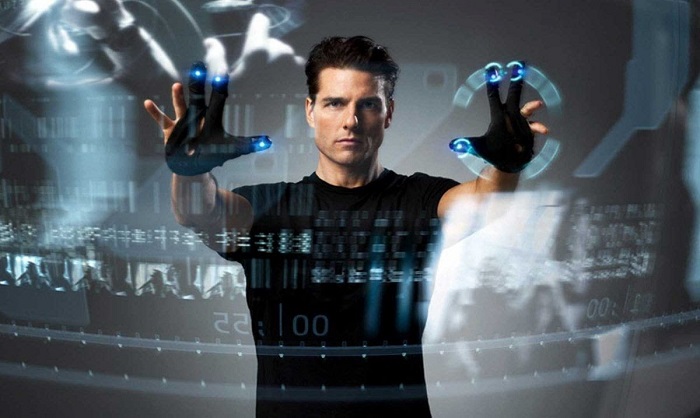ISABEL RUBIO ARROYO | Tungsteno
From telepathy to teleportation, for decades many authors and screenwriters have imagined what the future would be like. While many of these predictions seem far from reality today, others that seemed like the stuff of science fiction decades ago have turned out to be quite accurate. More than 50 years ago, the film and novel 2001: A Space Odyssey first showed us what tablets would look like, and writer Ray Bradbury predicted wireless headphones in his novel Fahrenheit 451. Cryptocurrencies, voice assistants and biometric systems are some of the devices described in books and films years before they existed in reality.
Tablets
In 2011, Samsung and Apple were engaged in a legal battle over the similarity between the iPad and the Galaxy Tab 10.1 tablet. After being sued by the Cupertino-based company over the design of the latter device, Samsung argued that Apple had been inspired by the devices featured in director Stanley Kubrick's 1968 film 2001: A Space Odyssey. The Newspad was a device the size of a sheet of paper with a large screen that allowed the user to "conjure up the world's major electronic [news]papers."
Samsung drew on a still from Kubrick's film where two astronauts are eating and at the same time using their tablets to watch television. "As with the design claimed by [Apple's] D'889 Patent, the tablet disclosed in the clip has an overall rectangular shape with a dominant display screen, narrow borders, a predominately flat front surface, a flat back surface (which is evident because the tablets are lying flat on the table's surface), and a thin form factor," the South Korean company argued. Over the last decade, tablets have become mass devices. In 2021 alone, 168.8 million were sold, according to Statista.
In the film 2001: A Space Odyssey, two astronauts watch a video on their tablets while eating. Credit: SeptemberX
Wireless headphones
In 2021, 548 million headphones were sold worldwide, according to Statista, of which 55% were wireless. Almost 70 years ago, when these devices did not yet exist, Ray Bradbury described wireless headphones quite accurately in the dystopian novel Fahrenheit 451: "And in her ears the little Seashells, the thimble radios tamped tight, and an electronic ocean of sound, of music and talk and music and talk coming in, coming in on the shore of her unsleeping mind." In this book, which portrays a society in which books are banned and firemen burn them to prevent the proliferation of critical thinking, the author also predicted large flat-screen televisions.

Ray Bradbury described wireless headphones quite accurately in Fahrenheit 451. Credit: Unsplash
Cryptocurrencies
Bruce Sterling casually described cryptocurrencies in Heavy Weather. This book, published in 1994 and set in the year 2031, describes a world in which the climate has become unpredictable and dangerous due to the continued production of greenhouse gases and the uncontrolled expansion of humanity. The story makes reference to digital money a priori very similar to cryptocurrencies, which are based on blockchain and allow users to make private transactions without relying on governments or banks. This money, according to Sterling, is "electronic, private cash, unbacked by any government, untraceable, completely anonymous, global in reach, lightning-like in speed, ubiquitous, fungible, and usually highly volatile."
Cryptocurrencies are designed to conduct financial transactions without relying on governments or banks. Credit: BBC News
From machine learning to biometric systems
In the 2002 film Minority Report, set in 2054, the police use psychic technology to prevent murders in the future. Today, criminal activity remains a major concern in modern society. This is backed up by research that highlights the potential of new technologies and strategies to prevent potential crimes.
These systems are related to machine learning, which allow companies to collect data through technology to make predictions. "The Internet is watching us now. If they want to, they can see what sites you visit," said Steven Spielberg, the film's director, in an interview in 2002. He predicted: "In the future, television will be watching us, and customizing itself to what it knows about us." He was not wrong. While video platforms like Netflix suggest personalised content, the algorithms behind some television apps serve to display tailored ads.
In Minority Report, other technologies such as the autonomous car, facial and eye biometric systems, the voice-controlled home and interface systems that allow users to interact with a device through gestures alone are also foreshadowed. Technology giants have been trying to develop and perfect all these technologies for several years. For example, some smartphone manufacturers such as Samsung or LG have developed gesture control systems to answer or end a call, adjust the volume, skip a song or snooze an alarm without touching the phone.
In Minority Report, systems that allow the user to interact with a device with gestures alone play an important role. Credit: Jean-Marc Denis
Minority Report, 2001: A Space Odyssey, Heavy Weather and Fahrenheit 451 are not the only books and films ahead of their time. While the mobile flip phone appeared in Star Trek in 1966, in the 1970s science fiction authors such as Poul Anderson, Harlan Ellison and Larry Niven wrote the book 2020 Vision, in which they imagined a future with robot chefs. 3D food printers, holograms and drones are some of the technologies that also saw the light of day in books or on the big screen at a time when they were practically unthinkable in the real world.
· — —
Tungsteno is a journalism laboratory to scan the essence of innovation. Devised by Materia Publicaciones Científicas for Sacyr’s blog.
